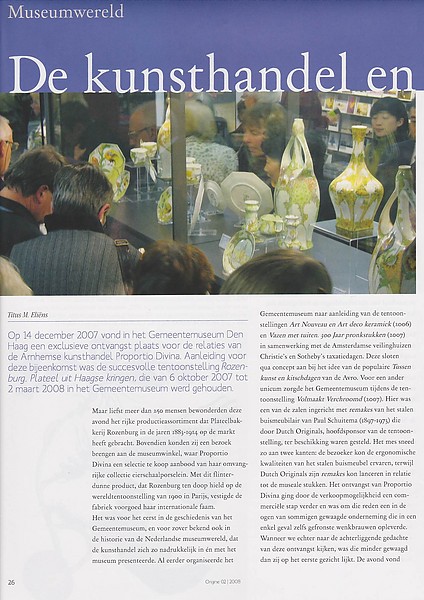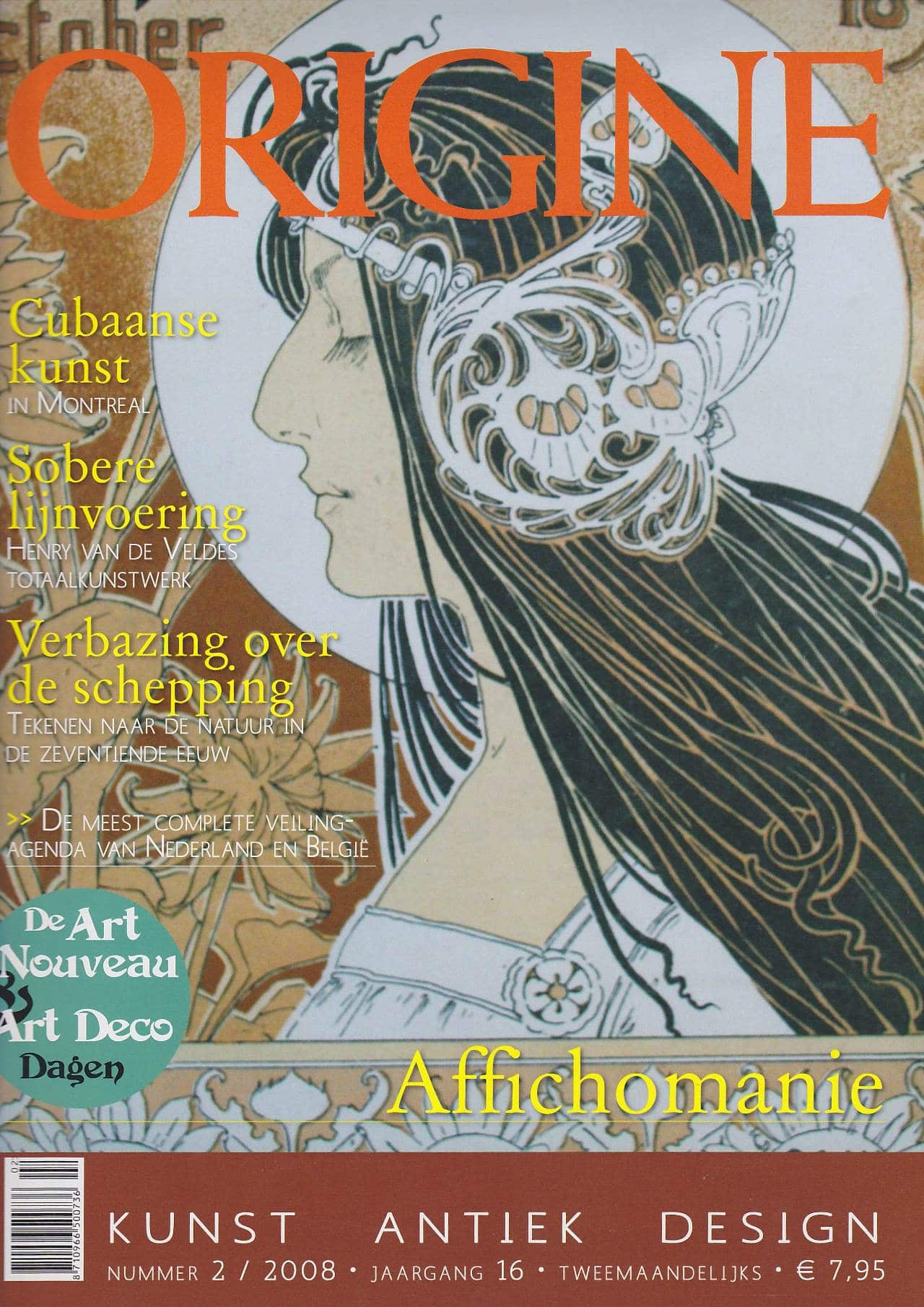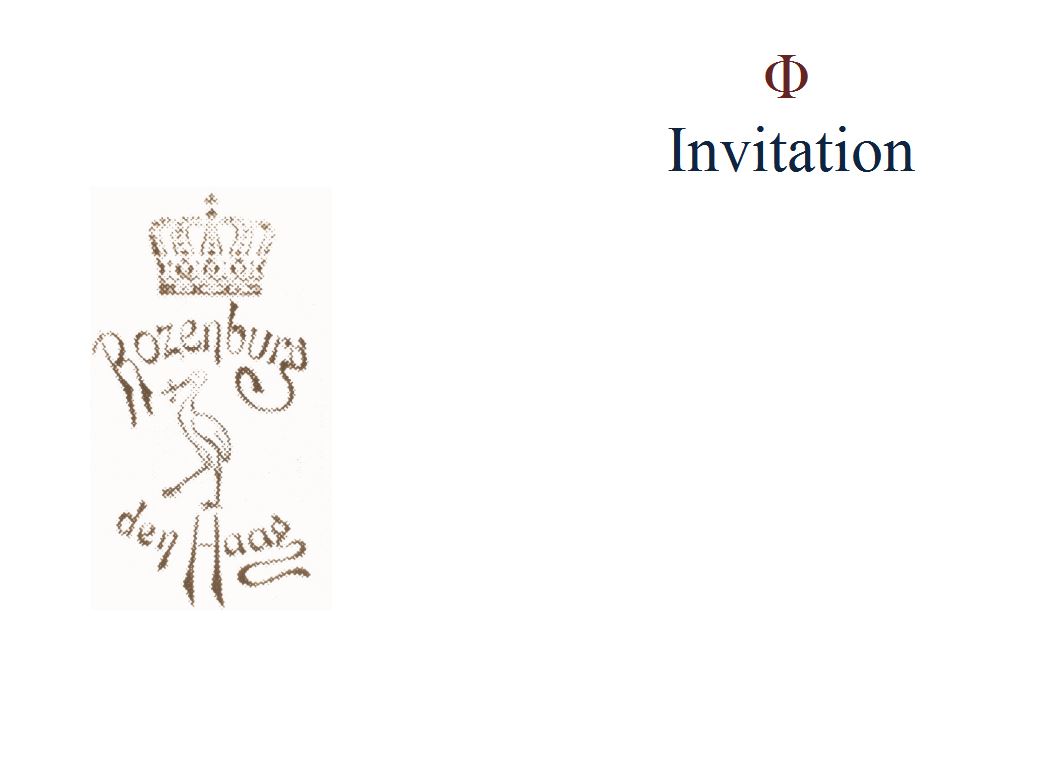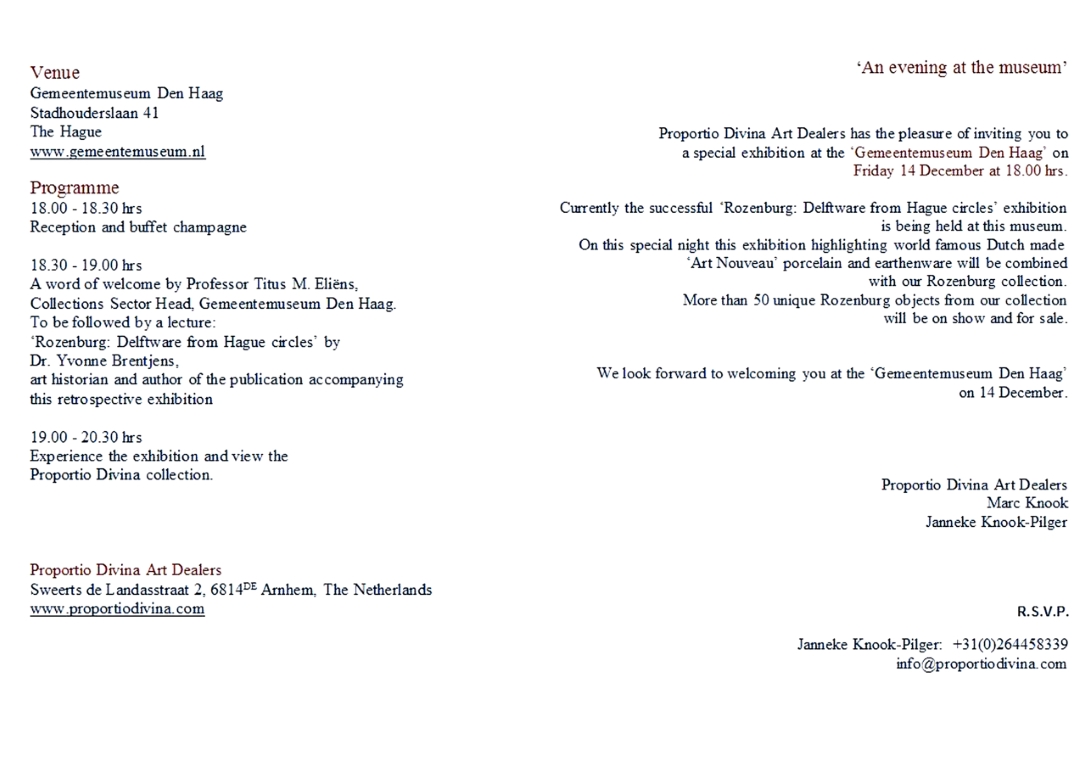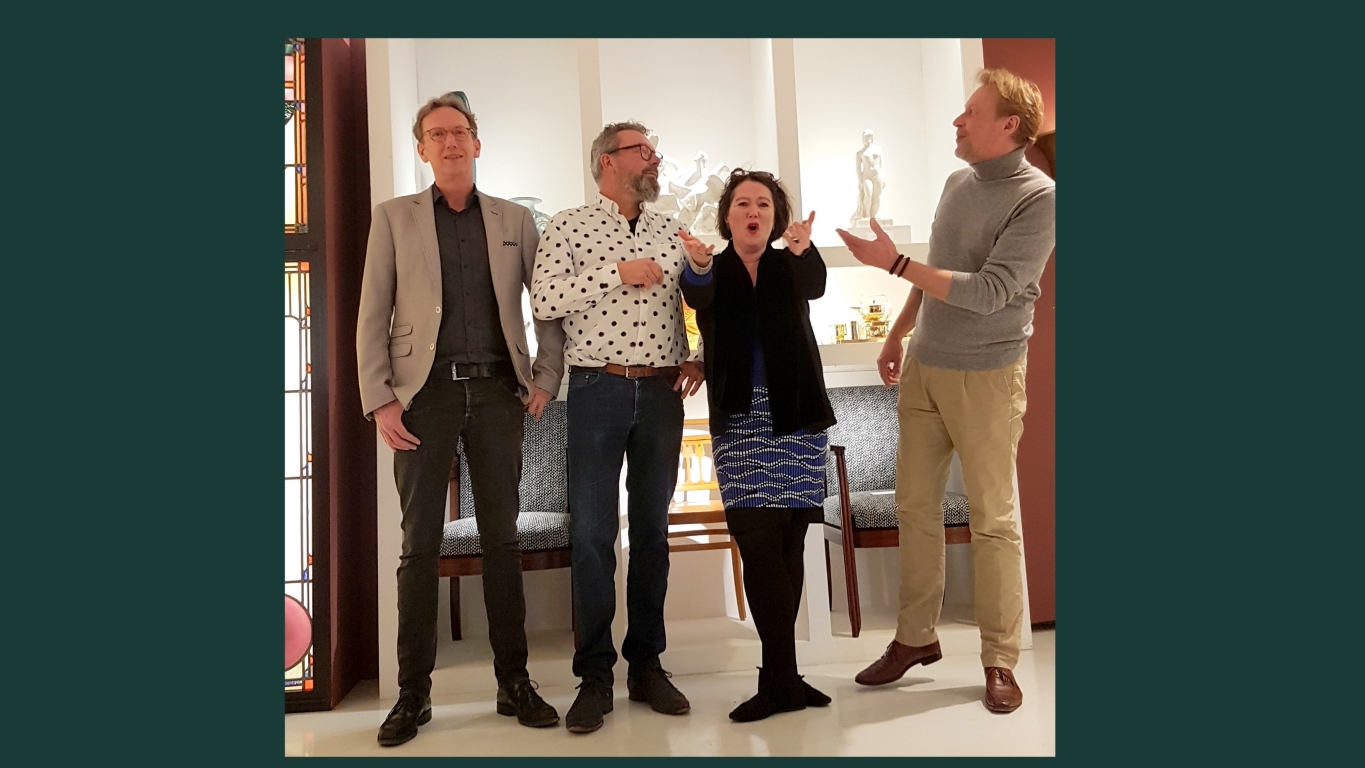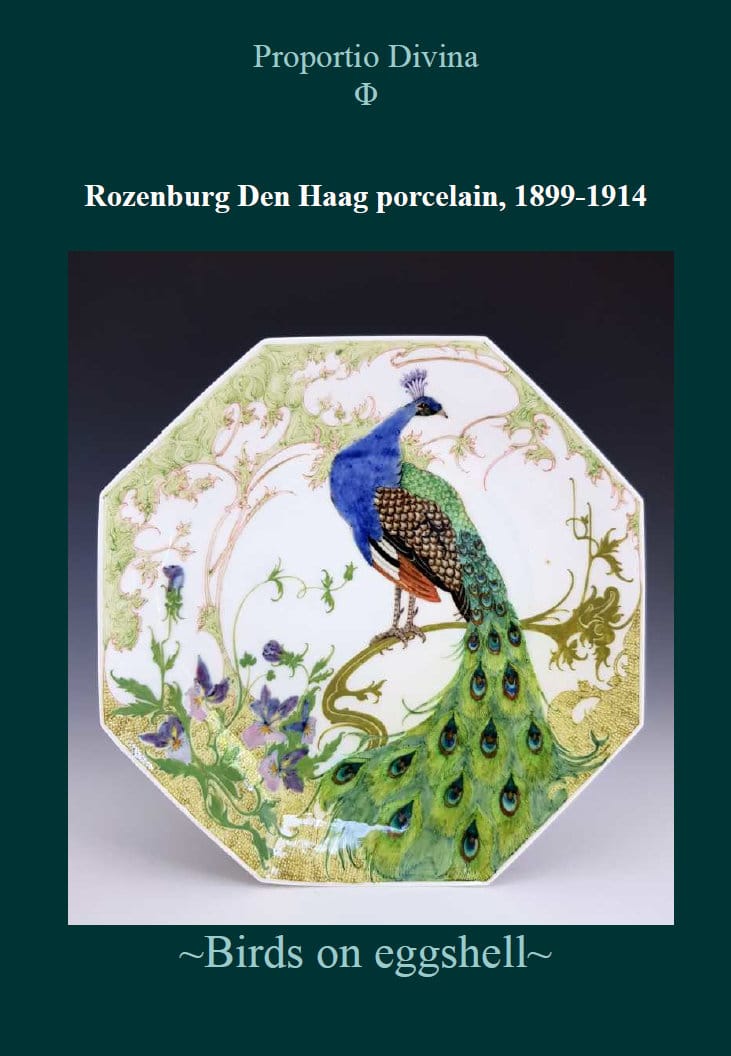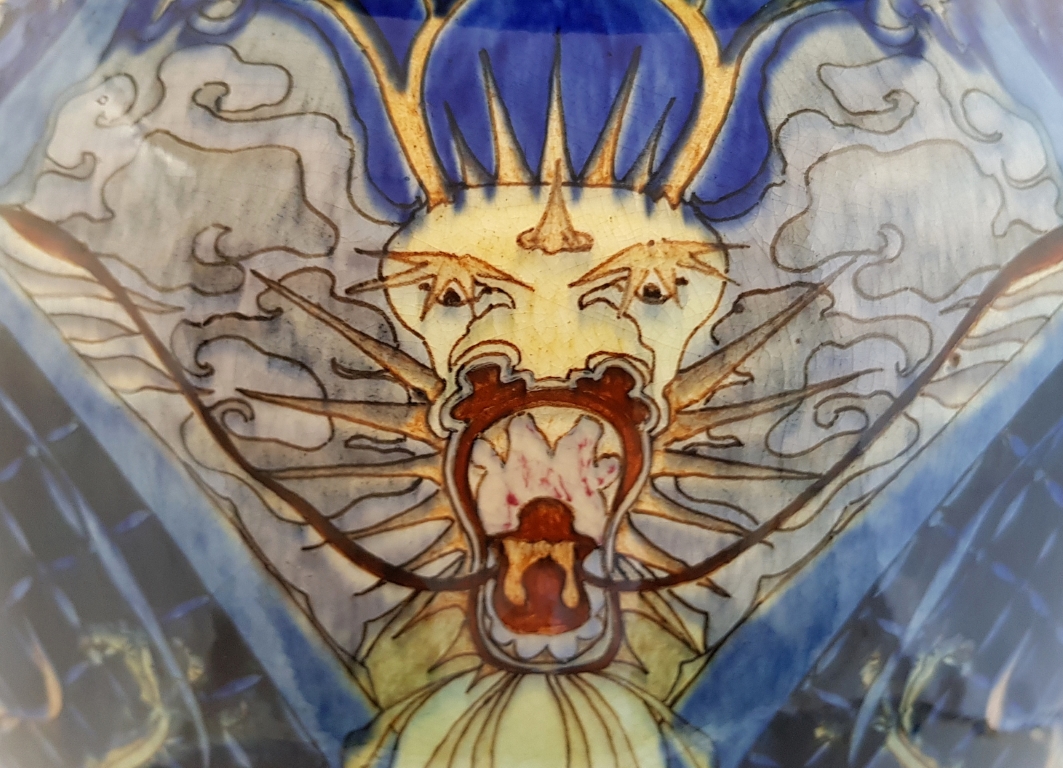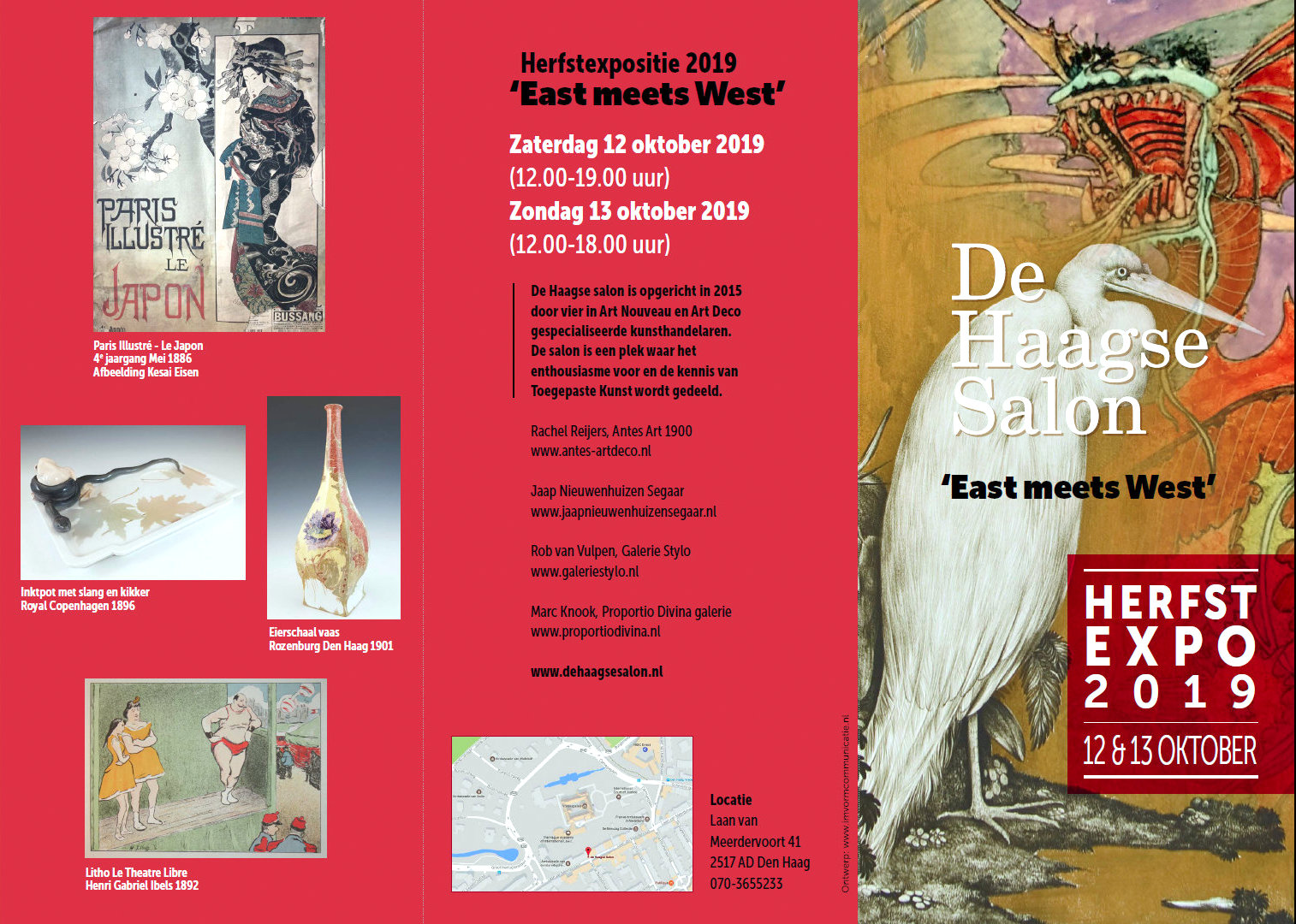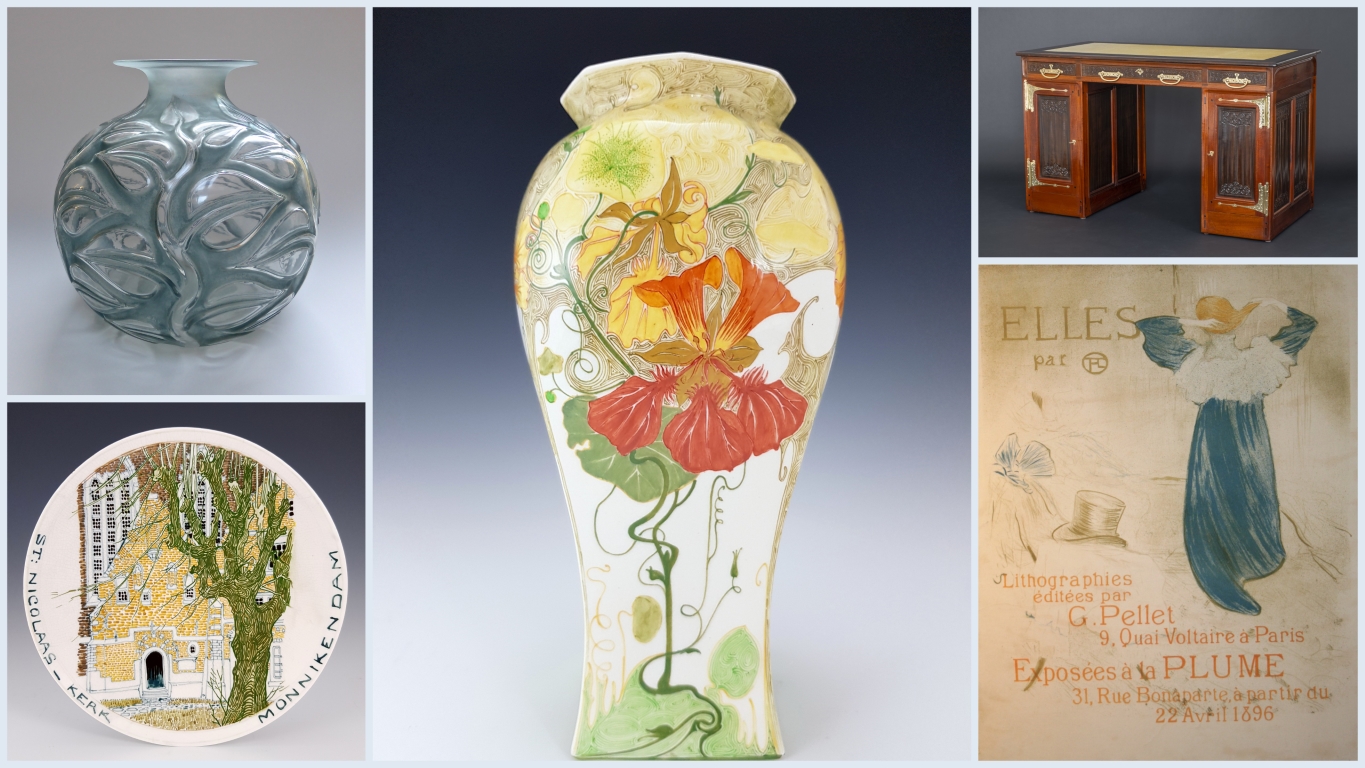A review of the exhibition “An evening at the museum”, by Titus M. Eliëns (head of collections at the Gemeentemuseum The Hague), published in Origine Art Magazine March 2008. Translated from Dutch by Peter Boel.
Museum world
The art trade and the museums
by Titus M. Eliëns
On 14 December 2007 there was an exclusive reception in the Gemeentemuseum in The Hague for relations of art dealer Proportio Divina from Arnhem. The occasion for this meeting was the successful exhibition Rozenburg. Delftware from Hague circles, which was held in the Gemeentemuseum from October 6, 2007, to March 2, 2008.
On this evening, a crowd of more than 250 admired the rich production selection that the Rozenburg Delftware Factory put on the market between 1883 and 1914. They could also pay a visit to the museum shop, where Proportio Divina offered a selection of its sizeable collection of eggshell porcelain for sale. With this wafer-thin product, introduced by Rozenburg at the 1900 world exhibition in Paris, the factory made a lasting international name for itself.
It was the first time in the history of the Gemeentemuseum, and, as far as we know, also in Dutch museum history, that the art trade manifested itself so emphatically in, and together with, a museum. Earlier the Gemeentemuseum had organised evaluation days in cooperation with the Christie’s and Sotheby’s auctioneering houses, connected with the exhibitions Art Nouveau and Art deco ceramics (2006) and Spouted vases. 300 years of showpieces (2007). Conceptually these events were inspired by the popular evaluation days of the Dutch AVRO TV series Tussen kunst en kitsch (‘Between art and kitsch’). The Gemeentemuseum organised another unique event during an exhibition called Perfectly Chromed (2007). Here one of the rooms was furnished with remakes of steel tube furniture by Paul Schuitema (1897-1973) by courtesy of Dutch Originals, the main sponsor of the exhibition. Two birds were killed with one stone: the visitor could experience the ergonomic qualities of the steel tube furniture while Dutch Originals could launch its remakes in relation to the museum pieces. With the selling opportunity the reception by Proportio Divina went one commercial step further, which made it a risky undertaking in the eyes of some, even raising a few eyebrows here and there.
However, if we think of the idea behind the reception, it was less risqué than it looked at first sight. After all, the evening was organised around the idea of mutual profit, and it can be regarded as a textbook example of a good cooperative project between a museum and the art trade. Although the Gemeentemuseum possesses a collection of Rozenburg pottery that has no equal either qualitatively or quantatively, an appeal had to be made for loans by other museums and private collectors for this first special exhibition in 25 years, to be able to give a representative picture of the factory’s output. Apart from several museum loans, liberal use was made of two private collections: the Meentwijck collection and the STANYA collection. Despite the extensive network the Gemeentemuseum has built up over the years, obviously we cannot know each and every collector. Therefore we made use of the services of Proportio Divina, the most prominent art dealer in Rozenburg eggshell porcelain today, to point special pieces out to us.
Thus, thanks to this art dealer, a number of impressive eggshell porcelain pieces, which aptly illustrated the factory’s many-sidedness, could be represented at the exhibition Rozenburg. Delftware from Hague circles. This example proves that for the success of their exhibitions, museums are to a large extent dependent on the art trade, which is by nature well informed about which pieces can be found, and in what places. To express our appreciation we, the museum, did not hesitate to organise a reception together with Proportio Divina during which the exhibition could be visited while at the same time objects were put up for sale which the potential buyers could compare with the exhibited objects. This was a special occasion for collectors of Rozenburg pottery and other interested people, as it gave them the opportunity to materialise their interest in Rozenburg.
For the Gemeentemuseum The Hague as well as Proportio Divina the evening was a success – it proved how both parties can help one another without one unquestioningly delivering himself into the hands of the other. In fashionable words: a typical example of a win-win situation.
Titus M. Eliëns is head of collections at the Gemeentemuseum The Hague and Professor in Industrial Design at the Leiden University.
